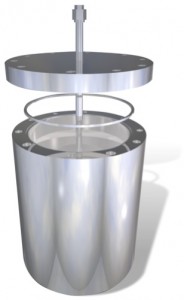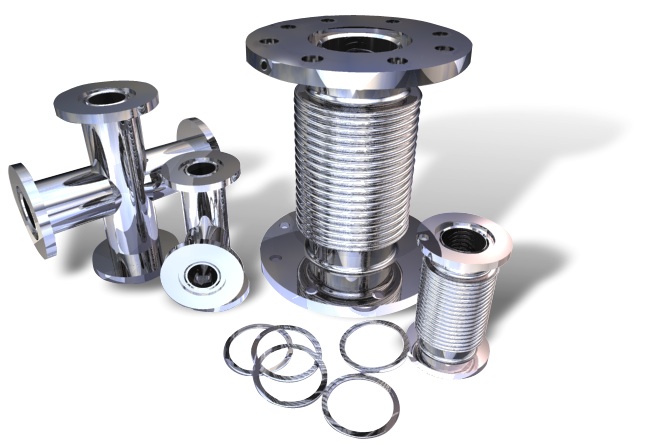Recently I was contacted by a customer with the following design problem. They had a 3″OD Kalrez seal in a diaphragm assembly within a pressure measurement device which has routinely operated at around 200ºC. New customer requirements had pushed the temperature and pressure limits up considerably. They were now looking at:
 Robust container, plenty of material and bolts to resist flex.
Robust container, plenty of material and bolts to resist flex.- 450ºC operating temperature with cycling
- 5,000 psig with nitrogen
- 40,000 psig (with water) for testing purposes
- Frequent need for servicing
This was a pretty extreme design specification. High temperature, ultra-high pressure and the assembly needed to be dismantled frequently for cleaning. Tough conditions, tough to achieve!
Under the new operating parameters, the Kalrez O-rings failed. First, the temperature limit was too high for Kalrez, which tops out at about 300ºC. In fact, there are no elastomers that will operate for more than a few minutes at 450ºC. Viton tops out at 200ºC. Chemraz is a Kalrez knock-off and doesn’t go any higher than 300ºC. Other formulations are no better. It’s just too high for organics, which turn to goo in a few minutes at those temperatures. Second, 40,000 psig is too high for most elastomers, which just get squeezed out of the gland at that pressure.
They had to move on from elastomers.
Metal seals were the obvious alternative for them with preferably a knife edge design with plenty of mass to the glands and sufficient bolts to prevent deformation of the housing. Knife edge seals are the best because they can be made absolutely leak tight at high pressure by achieving sufficient seal penetration — lots of force, which means you need big bolts. Notice the thickness of the lid in this image; plenty of thickness and bolts to minimize flex.
The seal and gland materials should have nearly identical thermal expansion characteristics. In this case, the recommendation was to use 316SS glands and Nickel 200 seals.

 This blog is devoted to discussions about the most difficult static sealing applications; to wit, situations that combine UHV, UHP, or both, reactive gases, high temperature (>300ºC) with cycling, all in production or field environments. Under these conditions, elastomers completely fail and the job of getting a system to seal can be very difficult, sometimes impossible. In my work at
This blog is devoted to discussions about the most difficult static sealing applications; to wit, situations that combine UHV, UHP, or both, reactive gases, high temperature (>300ºC) with cycling, all in production or field environments. Under these conditions, elastomers completely fail and the job of getting a system to seal can be very difficult, sometimes impossible. In my work at